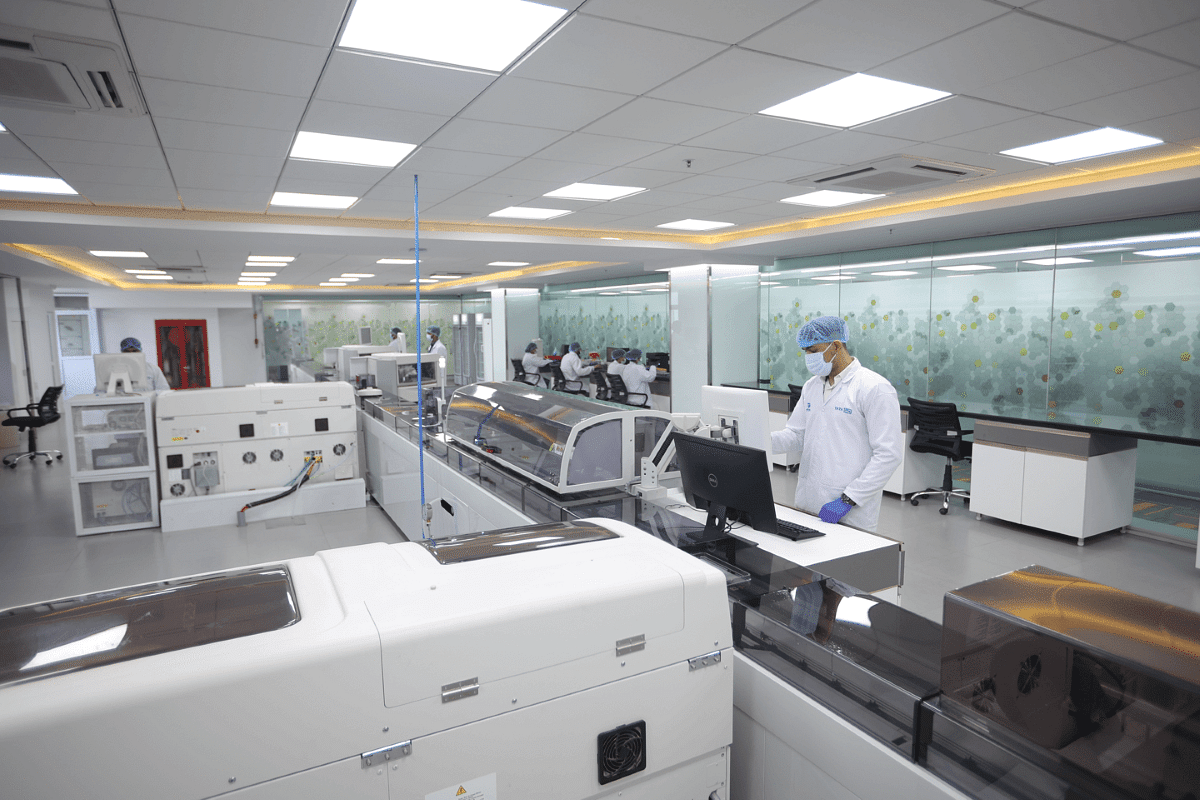Business
The Battle For $20 Billion Indian Diagnostics Sector: As Tatas, Reliance, Adani Fight It Out, Sector Is Heading Towards Consolidation
- India’s three largest conglomerates by market value – Tata Group, Reliance Industries and the Adani Group- are fighting it out in the diagnostics sector.
- Tata 1mg, Reliance Industries, Healthians, Pharmeasy, Lupin, Torrent, Adani, and several other new players now pose a threat to well-established regional and national chains.

India’s diagnostics sector (Tata 1MG)
India’s diagnostics sector (estimated to be at $10 billion in FY2021 and reach $20 billion by FY26) has seen a flurry of activity over the last three years.
Initially, the onset of the pandemic ensured that testing centres received huge volumes of business, and their revenues hot upwards. After the pandemic, a number of major players have decided to enter the diagnostics space.
Tata 1mg, Reliance Industries, Healthians, Pharmeasy, Lupin, Torrent, Adani, and several other new players now pose a threat to well-established regional and national chains.
There are several reasons for the influx of players into India’s diagnostics sector.
The organised diagnostics space was dominated by a few players with high operating margins and returns on capital employed. Since most tests are standardised with little differentiation, pricing power is almost non-existent in diagnostics.
Indian diagnostics businesses’ margins have been an anomaly compared to their global counterparts, and a decline was likely to occur. Further, even with the presence of large chains, almost 50 per cent of the Indian diagnostics market is unorganised, consisting of independent pathologists, while larger pathology chains make up only 15-20 per cent of the entire market.
The unorganised sector is unable to compete with larger chains in terms of costs, sourcing, branding, etc. As a result, they find it quite difficult to compete with larger chains and fall by the wayside while larger players continue gaining market share.
The large proportion of unorganised players in the business offers an opportunity for new entrants to capitalise on. An industry with high margins, low entry barriers, and no pricing power offers a good opportunity for disruptions, and new entrants have scaled up collection and testing quite quickly.
India’s three largest conglomerates by market value – Tata Group, Reliance Industries and the Adani Group- are fighting it out in the diagnostics sector.
Though Reliance was the first of these players to enter the space, Tata 1MG has gained prominence by offering low-cost routine biochemistry tests.
Some new players are offering certain routine tests at nearly a tenth of the usual test price at the same location. For instance, Credit Suisse highlighted that a Kidney Function Test with 1MG cost Rs 120 in Mumbai, while the same test with Metropolis cost nearly Rs 1,050.
Pharmeasy bought Thyrocare, a national diagnostics chain, and has reduced prices on several tests to make Thyrocare’s pricing competitive with new players.
Incumbent pharmaceutical players like Lupin and Torrent have also stepped into the diagnostics business, with expectations of utilising their healthcare expertise and relationships with doctors.
In line with diagnostics players’ ambitions of creating wellness products for consumers, all players are bundling up different tests under wellness packages. However, well-funded new players have offered significantly low prices on this front as well.
Investor disappointment is clearly visible in the stock of listed diagnostics players that have underperformed indices by a significant margin.
The competition will likely continue in 2023 as some new players are still ramping up operations, and incumbents’ investor calls indicate that they expect competition to rise in the short term. However, the industry will likely consolidate going forward as smaller lab chains do not have economies of scale.
Lower volumes of Covid testing would also have a detrimental impact on these players since a significant portion of their revenues came from Covid testing. As a result, these players might be the first casualties of increasing competition in the sector.
Larger chains would find mergers and acquisitions attractive since it would help them with synergies such as lower procurement costs, common administrative charges, a more extensive distribution network, and bargaining power.
As mentioned earlier, Indian diagnostics players’ high margins are an anomaly compared to international players in developed markets. Hence, it is likely that the industry and investors might need to recalibrate their expectations about the industry’s profitability.
Support Swarajya's 50 Ground Reports Project & Sponsor A Story
Every general election Swarajya does a 50 ground reports project.
Aimed only at serious readers and those who appreciate the nuances of political undercurrents, the project provides a sense of India's electoral landscape. As you know, these reports are produced after considerable investment of travel, time and effort on the ground.
This time too we've kicked off the project in style and have covered over 30 constituencies already. If you're someone who appreciates such work and have enjoyed our coverage please consider sponsoring a ground report for just Rs 2999 to Rs 19,999 - it goes a long way in helping us produce more quality reportage.
You can also back this project by becoming a subscriber for as little as Rs 999 - so do click on this links and choose a plan that suits you and back us.
Click below to contribute.
Latest